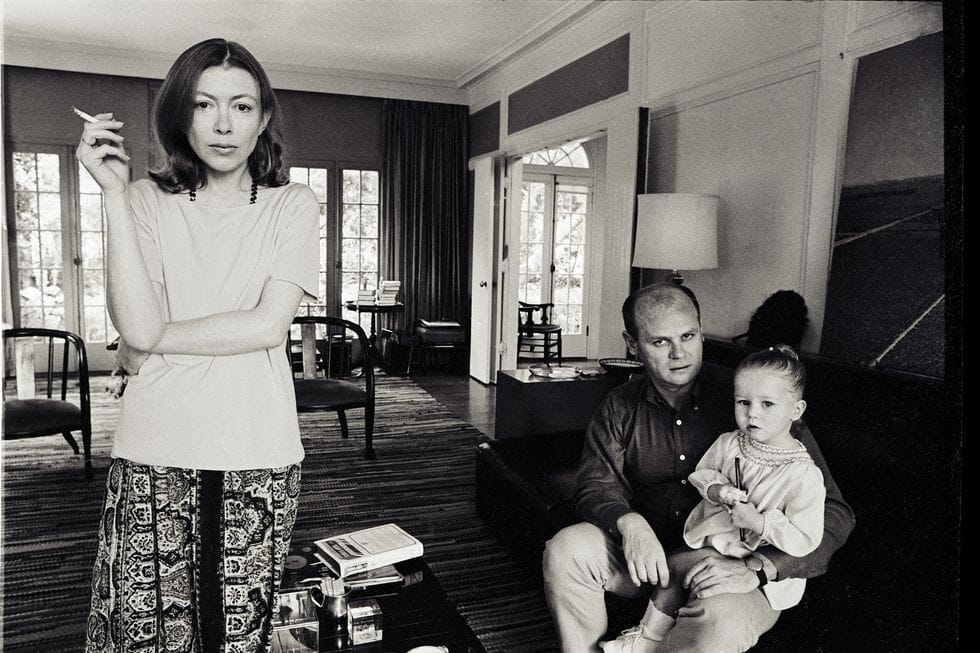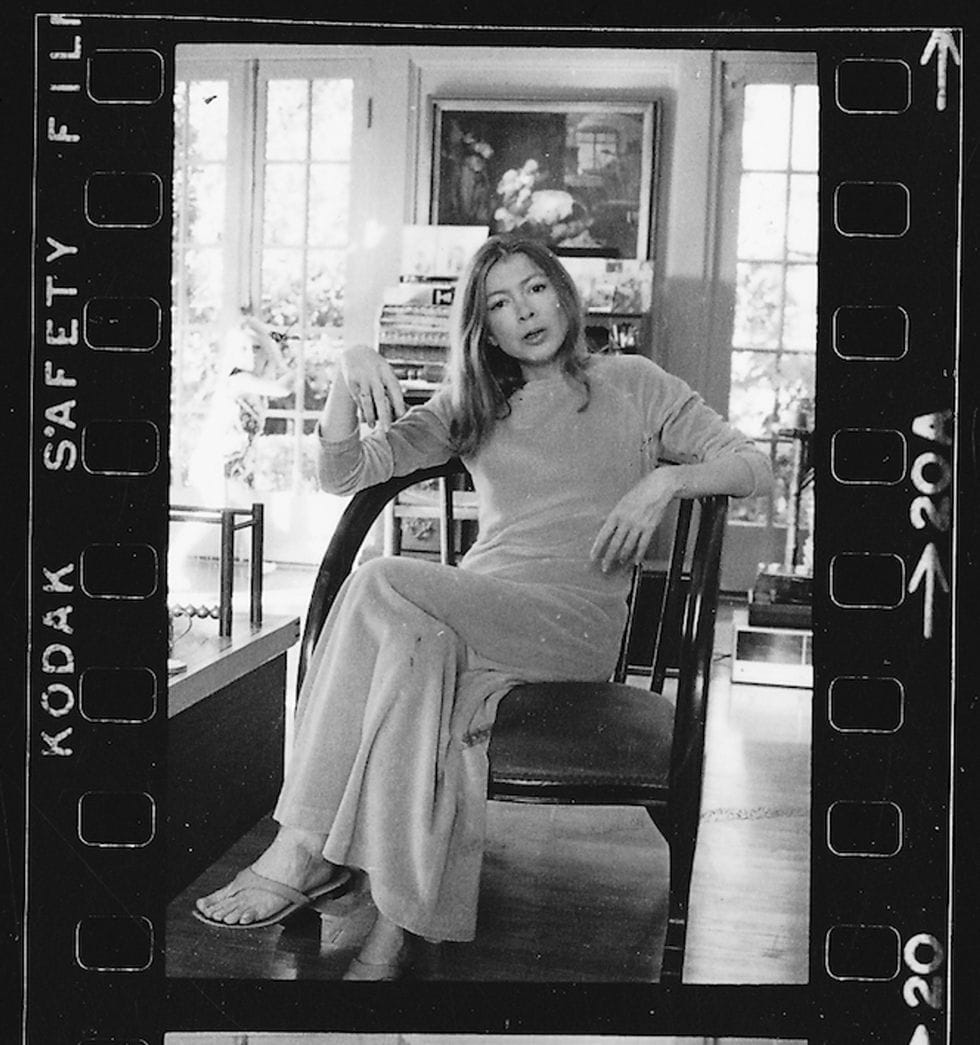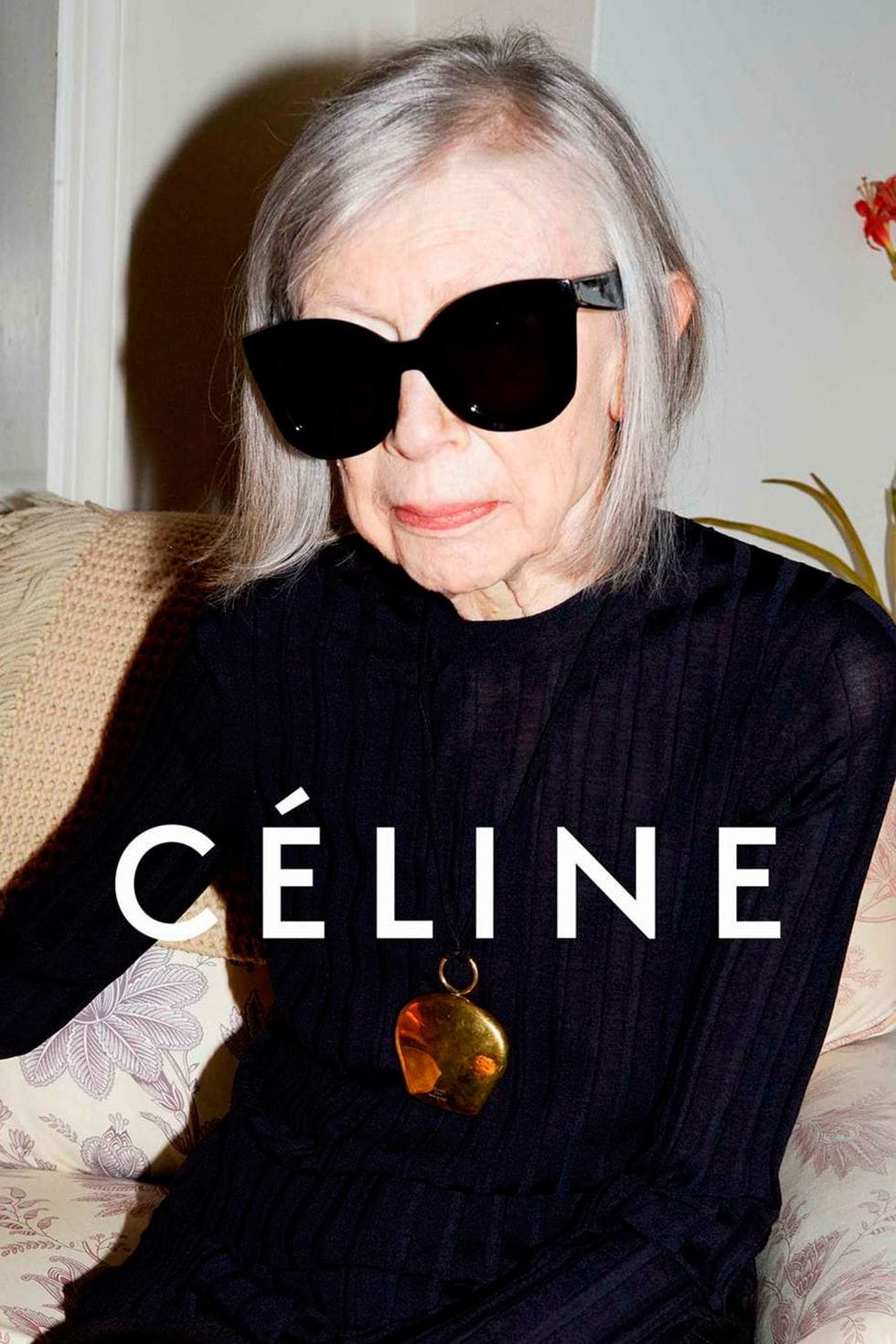
Courtesy of Netflix
One of the trappings of being Joan Didion is that her pioneering talent and artfully photogenic style have meant that her name is always dropped by those who want to compound their intellectual credibility. Those who have read her books, marvelled at her quotes, and pored over her words, rather than just her photographs, will know that she deserves a lot more than that. But, it’s a temptation that not even her family is immune to.
“It carried a lot of cache with girls,” laughs Griffin Dunne, Didion’s nephew and director of the first documentary to be made about the author. “We watched her fame grow and we knew that our aunt was the coolest person on earth. When I was 12, she invited me to a party she was throwing for Tom Wolfe and Janis Joplin. My mum came with me and I said to her, ‘Can you pretend you don’t know me please?’ I never got to meet Janis because it was a school night and mum made me leave early. I’ll never forgive her.”
“When I was 12, she invited me to a party she was throwing for Tom Wolfe and Janis Joplin”
The appeal of Joan Didion is enduring – she changed the way we write with her acutely observed account of the 1960s that was simultaneously honest yet controlled. Her heartbreakingly detailed experience of grief in The Year of Magical Thinking, following the death of her husband John Dunne, went far beyond what had previously been written about the subject – and still resonates with anyone who has truly felt loss. Some felt her cult had reached its peak back in 2015 when she starred as the face of Celine’s new campaign, aged 82. However, the success of Dunne’s documentary, The Center Will Not Hold, proves that her status and relevance is ever growing.
Three years ago, along with Didion’s grand-niece Annabelle Dunne, Griffin launched a Kickstarter campaign to raise money for a documentary about their aunt. Their goal was $80,000 and within weeks they’d made treble the amount. The documentary was acquired by Netflix and – if Instagram feeds featuring blurring stills from the programme are anything to go by – the author remains as popular with the fashion set – and beyond – as ever.
“She’d been asked several times to do a documentary and she’s always said no,” said Griffin. “The idea of having someone set up a camera in her home for weeks if not months was too much – it was beyond the call of duty for her. But when I approached her about it, she said yes immediately. It was only then I thought, ‘oh my god, what have I done?’ This is a huge subject. I have never not been aware of the burden of getting this subject correct and doing her justice.”
“She looks the way you think she would when you read her work which is gratifying”
When Griffin asked his aunt why she’d agreed to the project, she offered a response that was perceptibly hers. “I asked her over email actually. And she just said, ‘Because I couldn’t think of a good enough reason to say no.’”
Handling the pressure of the documentary’s focus and the challenges of appealing to different viewers – some who knew everything about Didion, some of whom knew nothing – were ongoing considerations.
“We wanted it to be educational for people who didn’t know much about her,” said Annabelle. “At the same time, it was very intimidating because Joan has a rabid fan base who know everything she’s ever written. We wanted people to get to know her better as a woman.”

Didion with her husband John, and daughter, Quintana
Netflix
“A lot of people see her as a groomed figure who writes about the alienation of the soul,” adds Griffin. “Those who don’t know her think of her as the queen of darkness, but that’s not who we grew up with. She’s funny and loves to laugh. She likes absurdity – you see that humour in her writing, sometimes at the expense of the subject. She has a finely tuned ear to absurdity, to false messages and she translates those words into what they really mean.”
The documentary looks at the life and rise of Didion, exploring her huge body of work as an author. It shows what made her such an exceptional journalist – excellent journalism requires a perfect mix of empathy and detachment – and, as one particularly memorable anecdote proves, Didion had both nailed.
“It’s never comfortable talking to someone you love about the death of someone you both knew”
The Center Will Not Hold also looks at her personal life – most notably her marriage to writer John Dunne and her adopted daughter, Quintana, both of whom died too young and tragically within a year of one another.
One of the only criticisms that the documentary has faced is that Dunne doesn’t go far enough in exploring this challenging period in his aunt’s life. The director insists that no subjects were out of bounds in making the documentary, nor that his aunt offered any direction in what way to steer the narrative.
“It’s never comfortable talking to someone you love about the death of someone you both knew – in this case two deaths,” says Griffin. “She’s a journalist, so she expected me to ask questions about it. Ultimately, the choice was editorial rather than down to sensitivity. We got a lot more from Joan about Quintana and John – exactly the sort of details that people think I shied away from. But, for me, it felt like going down a rabbit hole – I didn’t want to over-explore because that leads to more questions, and the documentary had to be a certain length.”

Courtesy of Netflix
Perhaps it is the enigma and cool control of Didion that makes her so popular with the fashion world. Pictures of her draped over a yellow Stingray in the 60s hold as much allure now as they did then. Her take on glamour – big sunglasses, simple, neat lines and muted tones – is still obsessed over.
“The way she writes and dresses is quite similar,” says Annabelle. “She’s very restrained in terms of her image and people respect that. She’s always been herself – restrained but glamorous. She looks the way you think she would when you read her work which is gratifying.”
“She attracted readers just by standing by that Stingray,” says Griffin. “It prompted people to ask, ‘Who is that woman?’ I thought the Celine/Phoebe Philo casting was genius. They share a similar simpatico about restraint, where less is more. They seem to have a lot in common.”

Didion for Celine spring/summer 2015
Courtesy
The conversation moves onto the idea of whether or not a Joan Didion biopic would be a good idea. Griffin can’t really imagine it, and says he’s happy to sit out the rest of his life based on the success of the documentary – which seems reasonable all things considered.
“I know who I’d cast as Joan though – Michelle Williams,” he says with confidence. “She has the physicality. I know her a bit and Joan means as much to her as a writer possibly could mean to someone. She lives her life by Joan’s stories and I know her words have meant a great deal to her. When I was talking to her about Joan… I mean she even sounds like her.”
For now, we have just the documentary in which to see into the inner world of Joan Didion. But, it begs the question, what did the woman herself think of it?
“I made her sit through the three-hour cut, so she could see the longer version and gauge from that,” says Griffin. “Her reaction was one of the most gratifying moments of my life. She just looked at me and said, ‘thank you’.”
From: Harper’s BAZAAR UK



